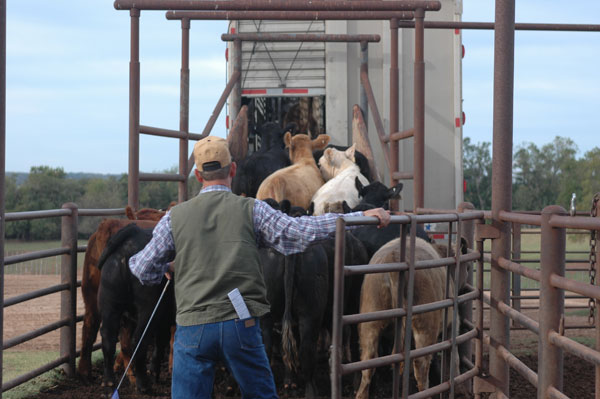Consider direct marketing of weaned calves
For producers with enough calves to fill a semi, direct marketing offers benefits.
November 28, 2018

By Bruce Derkson
Although preconditioning of newly-weaned calves remains popular throughout much of the U.S. and to a lesser extent in Canada, attempts to trim costs from the negative side of the ledger continue as more producers are viewing satellite and video sales direct from the ranch as a possible method to expand their profits.
Many feedlots still fill their pens purchasing small groups from the local auction barn sales. Since operations with less than 50 head hold 82% of the cows in the U.S., the value of auction barns for marketing calves will remain. But if you have enough calves to make a semi load, direct marketing is an alternative worth looking at.
These types of sales reduce significant amounts of travel stress along with avoiding excessive co-mingling with unknown-origin cattle. An unconfirmed report published years ago claims a single 5,000 to 10,000 head feedlot traced the cattle on site to over 2,000 previous owners. Even if this study is flawed, there is a huge amount of co-mingling of vulnerable cattle.
Cattle transport coupled with co-mingling of multi-origin calves increases stress, shrinkage and the incidence of respiratory illness. So it would stand to reason that these stressors should be reduced if possible, not only for the potential health of the weaned calves moving forward but for the producer’s bottom line.
With the ongoing prevalence of the consumer’s attention to animal welfare, producers cannot afford to randomly and without thought assume a generous on-going application of antibiotics is the answer. Concerns over antimicrobial resistance continue to grow and limiting transportation stresses can be an important first step in reducing their use.
Research sponsored by the Beef Checkoff showed a myriad of factors negatively impacting weaned calves that arise from trucking and shrinkage alone. They included loading and weather conditions, time in transit, co-mingling, segregation of different sexes and weight classes into separate trailer compartments, driver experience, animal nutrition, health status, and physical condition as aspects of concern.
Above and beyond simple gut content shrinkage, the research claims actual tissue loss can exceed 60% of the total body weight loss. Rough handling and excessively high ambient temperatures can drive this number even higher.
Besides eliminating extra transport stress and limiting co-mingling of calves, formal direct shipment satellite and video sales from the ranch can provide documented evidence of vaccinations, weaning dates, certifications of castration and other treatments. These detailed descriptions may help in the elimination of repeated procedures including deworming and lice control, endectocides, vaccination redundancy, and even implanting. If enough trust can be earned and established between buyers and sellers, information of specific vaccinations and implants can be exchanged to potentially reduce or even end redundancy and stacking of implants.
Even though these sales are run by the auction markets, they are internet based with generally lower costs to the seller than the services of the entire auction barn facilities.
If weaned calves designated for ranch video sales are preconditioned over an established period of time, there are even more positives for both sellers and buyers. Beyond the previously mentioned benefits of reduced stress and transport, these calves should have less propensity for sickness and move onto feed quicker with more efficiency. Many feedlots have introduced feed matching programs to make the transition even easier.
F.A. Thrift of the Department of Animal and Food Sciences at the University of Kentucky indicated that buyers in the U.S. paid premiums of $1.43 to $6.15 per cwt for preconditioned calves versus non-preconditioned calves in 2011 with the extent of the premium being varied by cattle appearance and seller reputation confirming there are definite premiums to be had by the seller.
Direct shipping using ranch-based satellite and video sales have the potential to build long term relationships between sellers and feedlot buyers. There is no doubt that calves will realize higher weight gains, plus potentially lower morbidity and mortality rates.
An eleven-year Purdue University study of Illinois farms showed that 63% of weaned calf profits came from the added weight sold of preconditioned calves. Reducing the stresses of the volatile weaning season will undoubtedly increase the possibilities of this extra weight being available for sale.
In another Beef Checkoff-sponsored study, if following best management practices could result in a 1% decrease in shrink among the feeder cattle shipped at least once in the United States, the economic benefit would exceed $325 million. This is certainly something to consider when deciding how and when to market your weaned calves.
Derksen is a freelance writer and feedyard pen rider in Lacombe, Alberta, Canada
You May Also Like


.png?width=300&auto=webp&quality=80&disable=upscale)
